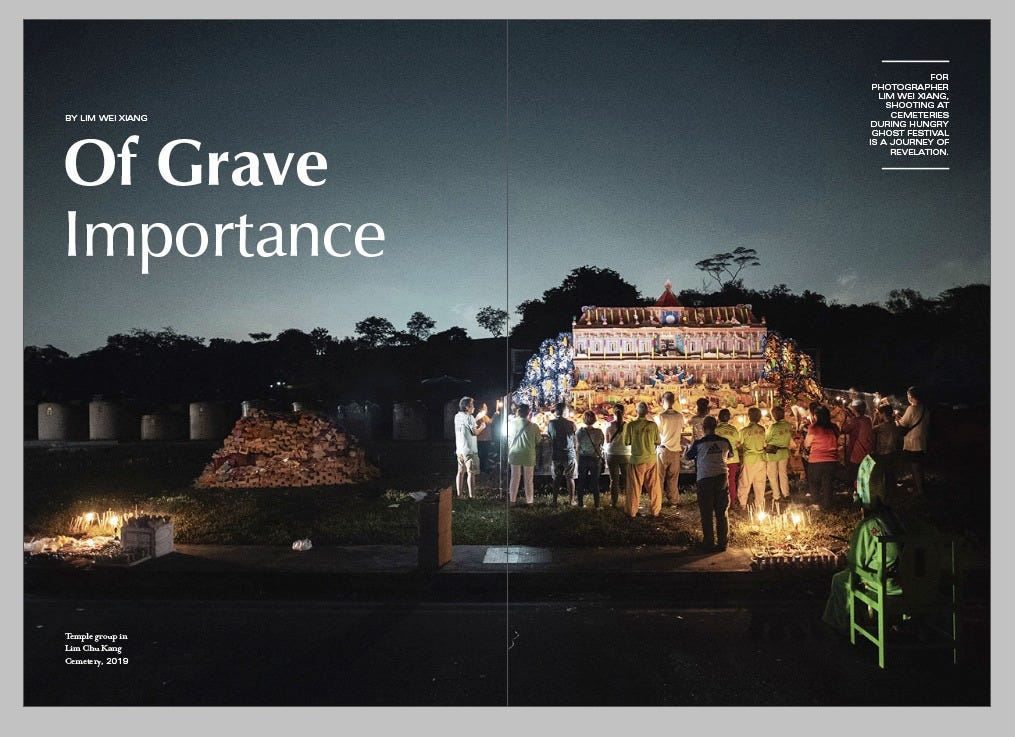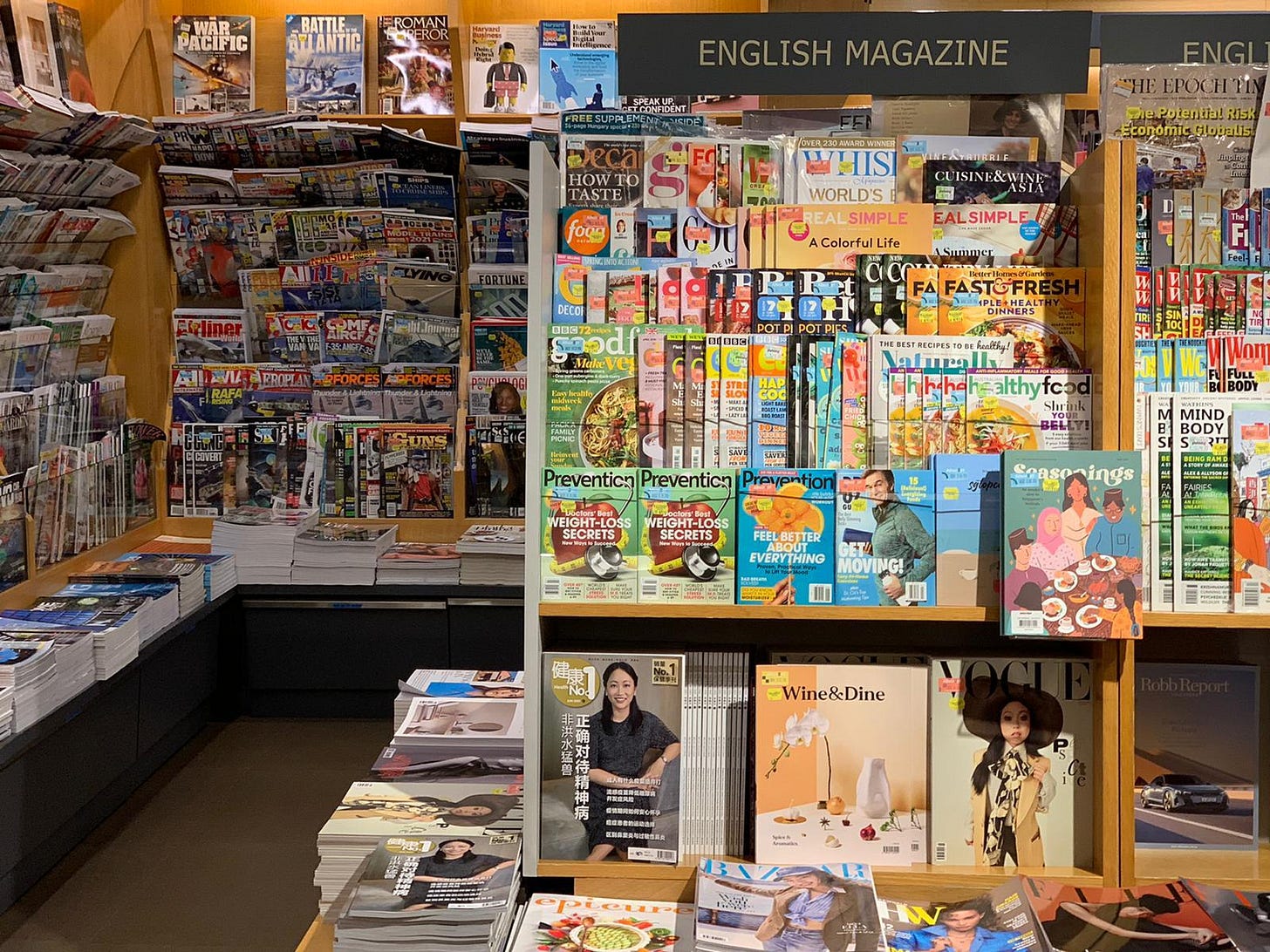Happy July everyone! I’ve been really silent here and on Singapore Noodles because we have been busy getting the next issue of Seasonings sorted in time for Hungry Ghost Festival this August! For those who are new to this newsletter, Seasonings is an independent quarterly food publication on Singapore’s festivals. It is a collaboration between HAFI and Singapore Noodles - Hafi takes care of the design and art, while I work primarily on the content and recipe testing side of things. Fun fact: we’ve never met each other in real life, and surprise surprise we actually work so well together!
Even though we’ve only had one printed issue (Hari Raya Puasa) so far, I feel like we have hit our groove in producing our second (Hungry Ghost Festival). Our process basically goes like this:
1. Research. I can’t emphasize how crucial it is for us to really understand the festival inside out. This includes reading whatever we can get our hands on that is relevant, speaking to people about the festival, and watching Youtube interviews & movies (I finally got down to watching 881!!). Initially, we wanted to have a section on supernatural experiences during Hungry Ghost Festival. But the more I understood the origins of the festival and its symbolic meaning, the more I felt that it would be a disservice to create content that feeds into the typical perception of the seventh lunar month being a time of superstition.
2. Sending questions to contributors and getting their responses. After getting a holistic idea of the festival, we come up with a set of questions to ask contributors and get them to send us detailed responses. This works better than getting them to pitch us stories, in my opinion, because we are able to hone in and focus on a particular aspect of their responses that fascinates us and prevents overlaps in content.
3. A Zoom call (we do only one every issue) to set the direction. The responses from the contributors usually gives me a good idea of the overarching themes and interesting ideas we could pursue. I’d come up with a list of stories and pitch them to Hafi, and she would give me feedback and share how design and art can elevate the content.
The call often runs up to 4 hours - so long that we need toilet breaks in between - and we do a lot of ‘riffing’ at this stage. We throw out ideas and bounce off each other.
I thought Barilla’s pasta-cooking playlists (below) where you listen to a set of songs that last as long as the time your pasta takes to cook was brilliant. I suggested adding a QR code linking to a playlist to a recipe in the issue, so that readers can get into the mood as they are cooking, and Hafi was like, “Why don’t we do a getai playlist?” That, of course, was a brilliant idea - one that is so true to the spirit of Hungry Ghost Festival.
4. Writing the content. At this stage, I work with our contributors to craft the individual stories that make up the issue. We truly believe that our contributors should not need to be a chef, writer, celebrity, media personality, or influencer for them to have their voices heard. We welcome everyday Singaporeans to contribute, because at the end of the day, it is about producing work that feels honest and authentic. If they are comfortable expressing their opinions and lived experience through prose, great! If not, I would send them questions to probe deeper and ghost-write. Most of the time, I learn so much from our contributors and am blown away by the photos that they share.
4. Recipe testing and photography. Each issue has 8-10 recipes, mostly tested by me. I feel more comfortable publishing a tested recipe because it allows me to put myself in our readers’ shoes and see if there’s any part of the instructions that might lack clarity. A key staple in Seasonings is our deep dive. Last issue, it was on rendang, and in this Hungry Ghost Festival issue we are doing one on ang ku kueh, a food item you’d commonly see being offered to ancestors, deities, or wandering spirits.
5. Layouting. This is where Hafi takes over. She arranges the content from our Dropbox folder on InDesign to get a rough idea of how many pages the issue has in total. With that figure, she can tell our printer what to expect, and we can decide if some of the content needs to be culled. Hafi will go through every single piece of written content and see how the information can be organized to make it easier for the reader to digest and understand.
6. Designing/ illustrating. According to Hafi, the purpose of design/ illustration is not just to make the page beautiful. It helps the reader visualize - especially things that are intangible. She would read the stories and pick out things that would help the viewer visualize and strengthen the narrative. The following is a story on white-chopped chicken, with a tutorial on how to chop and present the chicken the Chinese way - the empty spaces are left for illustrations to go in!
7. Proofreading and glossary writing. The part that requires the most discipline, this involves wading through the content a few more times, and being extremely pedantic about grammar, sentence structure, and spelling. We are including a glossary section in our second issue because we received some feedback from overseas/ foreign customers who might not know about some of the ingredients that Singaporeans are familiar with. If you are a Seasonings reader who would like to help us making future issues better, please help us fill out a quick survey here.
8. Off to the printers! The bulk of the work is complete once we turn the final artwork in to our printer. But there’s still other work to be done: handling distribution (p.s. we are stocked at Kinokuniya now 🥰), marketing, paying contributors etc. We also hope to make our roundtable sessions a tradition for each issue - these sessions let readers get to know our contributors a little better, and allow everyone to discuss topics that might not have been covered in the issue. Think of it as our version of a book club.
This was the roundtable session that we did for the Hari Raya Puasa issue:
All this happens in… 3 months. LOL.
There have been so many moments, particularly in the production of this issue - which has 13 stories! - where Hafi and I have both felt burnt out. Running Seasonings really helped us understand why commercially successful and popular magazines like Lucky Peach eventually fold, why indie magazines are typically released bi-annually/ annually, or why magazines generally have larger teams.
We started this project not envisioning it to last forever. When I first pitched the idea to Hafi, we only talked about producing four issues, but working on Seasonings has been fulfilling and eye-opening at every turn. With each issue, I’m getting a clearer picture of what a gift we have in terms of cultural diversity and heritage in Singapore, and what there is to celebrate and to protect… so who knows? Maybe we would continue it beyond the 4 issues.
We start taking orders for the HGF issue in August, but in the meantime, you can shop for our first issue on Hari Raya Puasa online or at Kinokuniya Singapore if you are keen! 🌸✨
Recently on Singapore Noodles:
1. Seasonings was featured on Timeout, Monocle, and Zaobao! Big thank you to Delfina, Zayana, and Ying Zhen for taking the time 🙇🏻♀️
2. Robert Chohan of Kopihouse UK came on the podcast to share about why our kopitiams and kopi deserve more recognition. One of my favourite episodes this year, we chat about the history of kopi, the origins of kopi guyou, torrefacto roasting in Europe and in Singapore, and more.
3. Tutorial for bak tong gou, a fermented and steamed sweet kueh. Only takes a few everyday ingredients, but it can be so tricky getting the texture right. I only succeeded on my fourth attempt!
It is so nice to be back writing newsletters. Till the next one! 🧚🏼♂️











